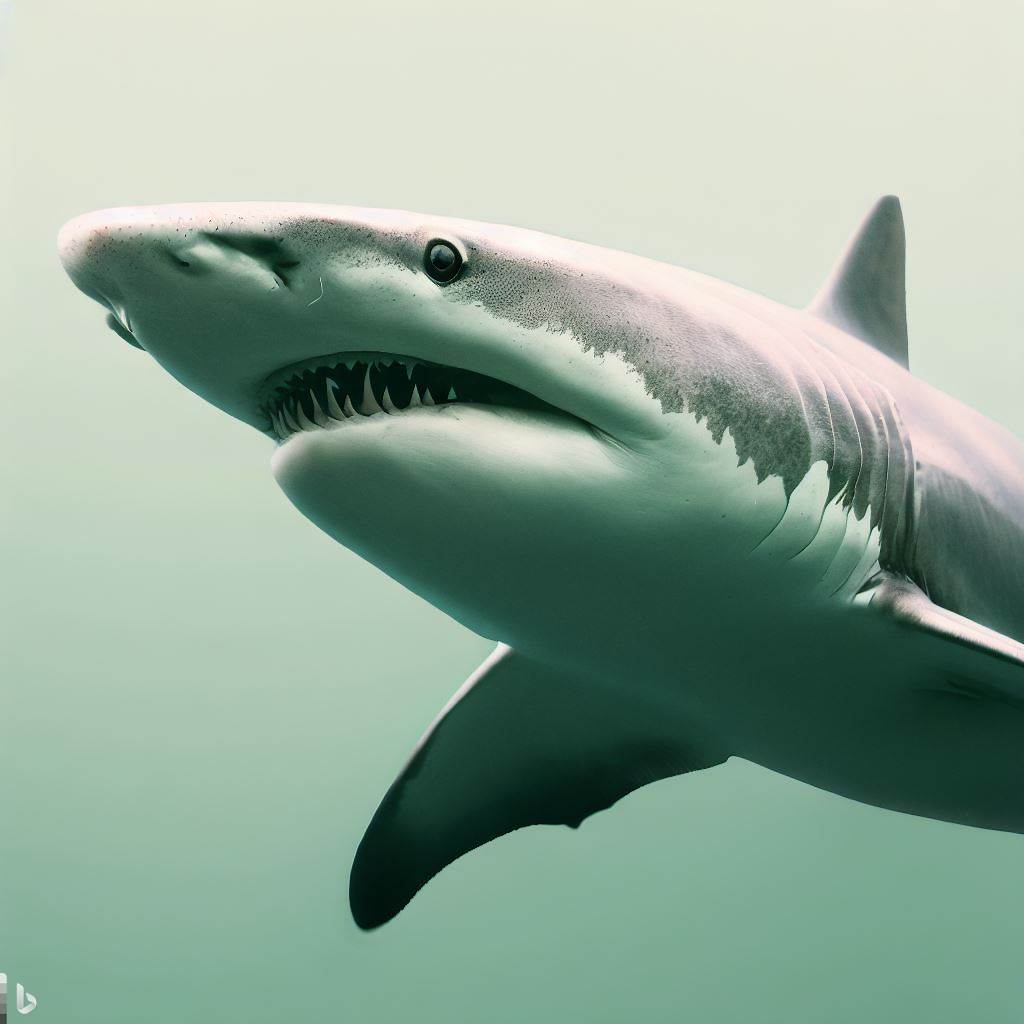Great white shark

Great white sharks belong to the mackerel shark family, Lamnidae, which comprises other formidable species such as mako sharks, salmon sharks, and porbeagle sharks. Standing as the largest predatory fish on Earth, these majestic creatures possess an imposing presence. Their iconic name stems from their white underbellies, while their topsides exhibit various shades of browns and grays, a phenomenon known as countershading.
The streamlined bodies of great white sharks, resembling torpedoes, allow them to propel through the water at astonishing speeds of up to 35 miles per hour (50 kilometers per hour). This remarkable agility is further enhanced by their powerful tailfins, enabling them to swiftly maneuver and pursue their prey. With a bite force reaching up to 1.8 metric tons, great white sharks can inflict devastating damage, swiftly incapacitating their target and minimizing the risk of a counterattack.
The Enigmatic Smile: Teeth of the Great White
One of the most distinctive features of great white sharks is their infamous smile, adorned with rows of serrated teeth. While they possess approximately 300 teeth, only a fraction of them are actively used for biting. Their teeth are part of a remarkable adaptation—a conveyor-belt-like mechanism that enables continuous replacement of teeth lost during their daily hunting activities.
Unlike humans, who typically grow only two sets of teeth, great white sharks continue to grow new teeth throughout their lives. This evolutionary trait ensures that they always have a formidable set of chompers at their disposal. Even in the unlikely event of losing entire rows of teeth, great white sharks swiftly regenerate them, allowing these apex predators to maintain their dominance in the oceanic realm.
Habitat and Feeding Habits
Great white sharks are known to inhabit temperate and tropical coastal waters across the globe, dispelling the common misconception that they are solely associated with Australia and South Africa. Their habitat preferences change as they age: juvenile great whites are more commonly found in coastal and estuary habitats, while adults venture farther out to sea, dwelling in pelagic ecosystems.
These majestic predators possess a diverse diet, reflecting their position at the top of the food chain. Depending on their size and age, great white sharks target a wide array of prey, including crustaceans, mollusks, sea birds, sea turtles, and various marine mammals. Their powerful jaws and razor-sharp teeth are efficient tools for carving off pieces of rotting flesh from the carcasses of dead whales, ensuring that no food source goes to waste.
Reproduction and Life Cycle
Due to their impressive size and slow reproductive rates, great white sharks exhibit unique characteristics in terms of reproduction. Female great white sharks typically reach sexual maturity at around 30 years of age, underscoring the importance of long-term conservation efforts to protect these magnificent creatures.
Great white shark mothers give birth to live young approximately every two to three years. A litter can consist of two to 17 pups, eachwith lengths ranging from four to six feet. Remarkably, these newborn pups are already capable of hunting and surviving on their own from the moment they enter the world. During their early years, they experience rapid growth, adding around 12 inches to their length annually.
Conservation Status and Importance
Despite their portrayal in movies like "Jaws," great white sharks are not mindless killing machines. In reality, the number of shark-related fatalities is relatively low, with just five reported deaths from shark attacks in 2022, despite increased human presence in the water. As research and understanding of these magnificent creatures expand, the perception of great whites is gradually shifting.
Nevertheless, great white sharks still face significant conservation challenges. They are frequently caught as bycatch in inshore fishing activities and are sometimes intentionally targeted in shark culls. The International Union for Conservation of Nature (IUCN) has listed the species as vulnerable to extinction, with the overall population showing a downward trend. Several nations and regions have implemented protective measures, making it illegal to target or harvest great whites. International treaties, such as CITES and the Convention on Migratory Species, further safeguard these apex predators.ate tapestry where great white sharks reign supreme, evoking both awe and reverence.


